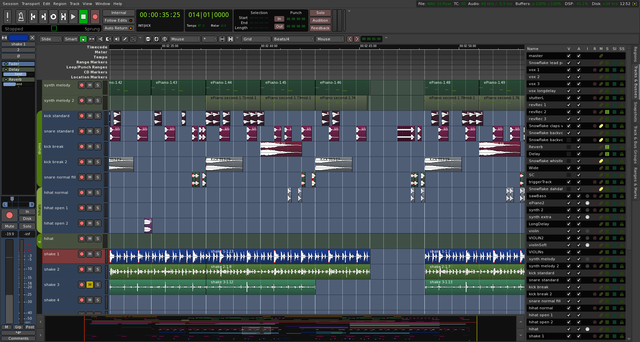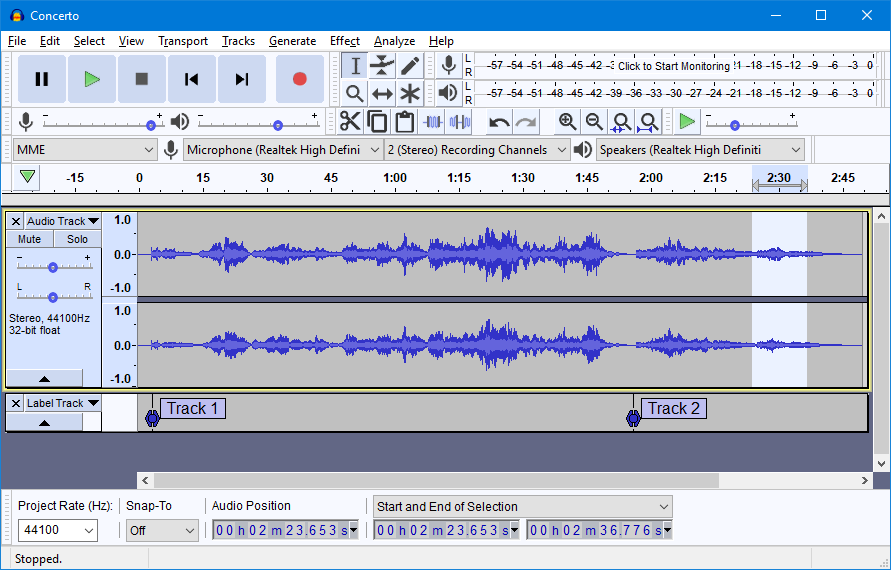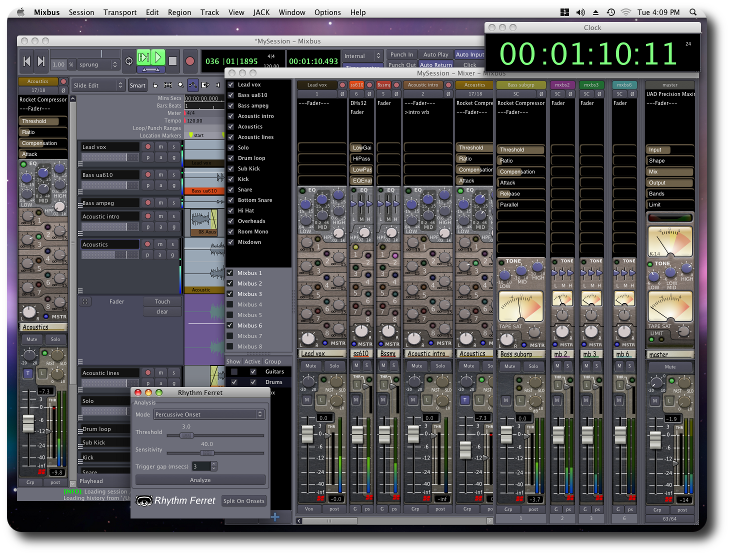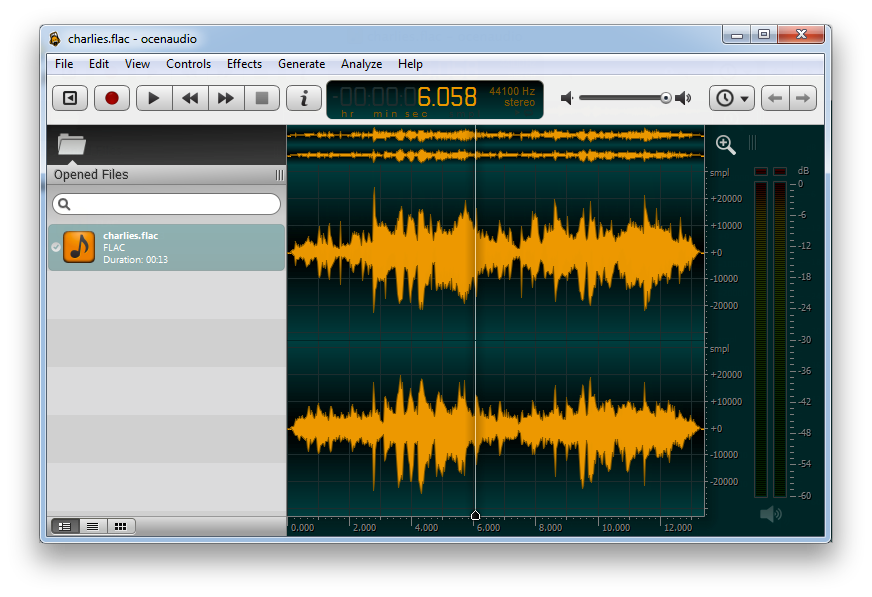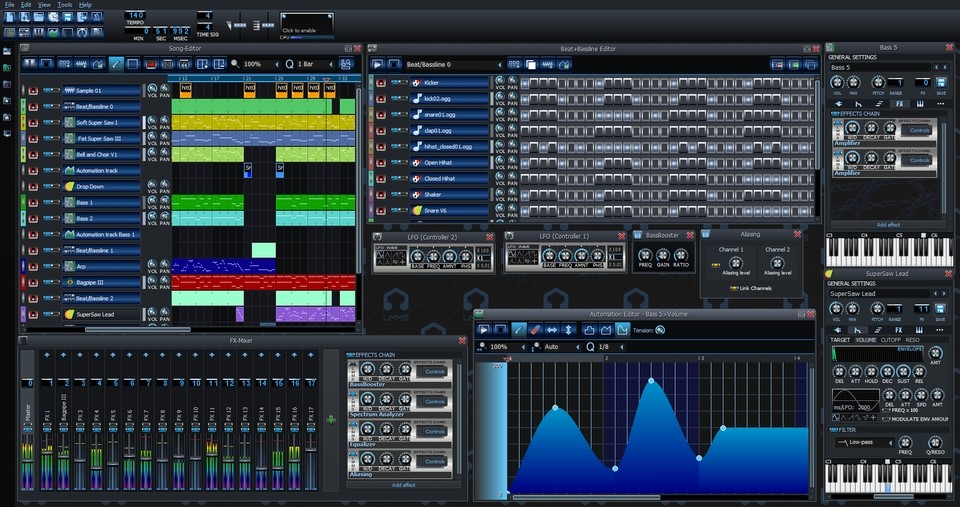1. Ardour
Ardour is a robust audio workstation that is open-source, free, and powerful in terms of features. With Ardour, you can record audio from a bunch of sources (such as microphones and mixers), cut and put together different audio clips, mix and apply effects on your project, and so on. This audio editing suite is meant to provide a fully professional experience, as it is apparent from its extensive list of useful features and tools.
Ardour has a non-destructive editing style, a vertical window-stack feature that allows easier navigation, and infinite audio track channels. You can direct-import audio from videos, choose from a wide range of handy plugins, perform push-and-pull trimming, and make good use of Ardour’s extensive VST support.
The source code for Ardour is completely free of cost but its developers have made the binary packages (such as RPM and Deb) available only to premium subscribers. So, if you are looking to install this program on your favorite Linux distro, you must compile the code by hand.
All in all, Ardour is one of the best audio recorders in the game. It is a stellar choice for professional editing and is very approachable from beginners standpoint. It is often considered to be on the same level as Adobe Audition when it comes to quality audio engineering. Finally, the system requirements are not that demanding either, as only 350MB of space is needed for installation and 2GB RAM for optimal performance.
2. Audacity
If you are looking for a basic audio recorder with powerful editing tools, Audacity is the way to go. It is free, open-source, cross-platform, and widely accepted as the top choice for Linux users. It finds application in a host of tasks including, but not limited to, digitizing records and cassettes, recording podcasts, and creating music.
In Audacity, users find an endless realm of audio editing and production possibilities, one that is akin to the best of the best – Adobe Audition. But enough loquacious praise, let’s talk about the features it has to offer. It has a highly intuitive interface that is perfect for amateur use and its extensive toolkit is loved by experienced professionals. With its huge set of effects (LADSPA, VST, LV2), it helps push further creativity in audio projects.
Audacity has plugin support for Nyquist, VST, LADSPA, and several more. In fact, effects are modifiable using a text editor, which means that you can even write your very own plugins! Furthermore, there are many file formats you can import and export from, such as MP3, WAV, FLAC, AIFF, and many others. You can also install libraries like libmad to import MPEG files. Seamless recording is possible through various sources, including your mic and the mixer. It also has modifiable sample rates, sequential editing, dithering, keyboard navigation, and an extremely handy spectrogram feature.
If I continue naming the features available in Audacity, we would be here all day. The point is that Audacity is undoubtedly one of the best audio recorders for Linux, and you should consider getting it.
3. Harrison Mixbus
Harrison Mixbus is one of the best industry-grade digital audio workstations available for Linux. Harrison Mixbus essentially has the same code base as that of Ardour with additional proprietary features like closed-source digital signal processing.
It enriches the inherent capabilities of Ardour and provides something that serious professionals will want to spend their dollars on. Mixbus boasts a vintage, analog-style of mixing, which is appreciated lots in its fanbase. Their success in the film industry is a testament to the quality of their product. Other than that, you already know the functionality for Ardour, so it is a similar case for Mixbus.
4. Ocenaudio
If you are a beginner in the market looking for a simple audio recorder with basic editing capabilities, Ocenaudio is your best bet. Feature-wise, it packs a firm punch but does not overwhelm the user with a huge number of options to choose from. With an easy-to-learn interface layout and beginner-friendly tools, it is our top recommendation to users with little technical ability.
Let us discuss the features Ocenaudio provides its users. For starters, it has an advanced memory-management system that keeps your audio files ready for use without wasting your RAM. Copy-pasting hour-long files is made instantaneous so effortlessly that it is amazing. You can use its spectrogram feature to clearly visualize and analyze the contents of your audio recordings. There is also real-time previewing of effects, so it saves time during filtering and applying EQ, gain, and so on.
Ocen Framework is the library this audio recording and editing solution is based upon, and its main focus is to make the experience simpler, accessible, and more efficient. Like I said earlier, this recommendation is targeted towards casual users, so Ocenaudio may be a turn-off for advanced creatives.
5. LMMS
LMMS is a top-notch digital audio workstation that comes packed with all the basic audio recording and editing necessities, in addition to its numerous advanced features. It is totally free and open-source as well. LMMS is mainly used for music production but its audio editing features are still sufficient for most users’ needs.
Music composition is made possible and impressively easy through LMMS. You can sequence, mix, compose, and automate many different clips using the same single interface (which is very easy to get a grasp of). LMMS comes equipped with customizable presets, effects, VSTs, and samples to help you get started.
There is also note playback through keyboard or MIDI input, which is pretty impressive. LMMS has LAPSDA plugin support, built-in audio manipulation effects like compression, reverb, delay, and distortion. Furthermore, there are parametric and graphic equalizers, a spectrum-analyzing tool that acts as built-in visualization, and so on.
As you can see, LMMS has a whole arsenal of music production tools. In addition to these, there are powerful audio editing features, as I mentioned, that work splendidly well for users of all levels of technical ability. Luckily, LMMS is not demanding at all in terms of system specifications, you only need 512MB of RAM and a 2-channel sound card. All these things when put together, make LMMS a promising DAW.
Conclusion
In this article, we covered the best audio recording and editing solutions available for Linux. There is a vast range of options to choose from, which is why we made this list inclusive for users of all levels. Hopefully, you will now have a better understanding of which recorder you want to get for yourself!

